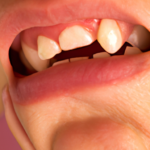Maintaining good oral health is crucial for children, as it not only ensures a bright smile but also contributes to their overall well-being. Dental diseases in children, such as tooth decay and gum disease, can have a significant impact on their oral health if left untreated. In this article, we will explore the common symptoms, causes, and diagnosis of dental diseases in children. We will also discuss effective treatment options and prevention strategies that can help in keeping their teeth and gums healthy. Additionally, we will provide expert tips, dental hygiene practices, and early intervention measures to promote optimal oral health in children. By understanding and implementing these preventive measures, parents and caregivers can play a vital role in safeguarding their children’s dental health.
1. "Understanding Dental Diseases in Children: Common Symptoms, Causes, and Diagnosis"
Dental diseases in children can be a cause of concern for parents and caregivers. Understanding the common symptoms, causes, and diagnosis of these conditions can help in their prevention and early intervention.
Symptoms of dental diseases in children may vary depending on the specific condition. However, some common signs to watch out for include tooth pain, sensitivity to hot and cold foods or drinks, swollen gums, bad breath, and difficulty chewing or speaking. In some cases, children may also experience bleeding gums or tooth discoloration. It is important to note that these symptoms should not be ignored, as they can indicate the presence of underlying dental issues.
Several factors contribute to the development of dental diseases in children. Poor oral hygiene practices, such as irregular brushing and flossing, can lead to the accumulation of plaque and bacteria in the mouth, ultimately causing tooth decay and gum disease. Additionally, a diet high in sugary foods and beverages can also contribute to the development of dental issues. Other factors, such as genetic predisposition, can increase the risk of certain dental diseases in children.
Diagnosing dental diseases in children typically involves a thorough dental examination by a dentist or pediatric dentist. The dentist will assess the child’s oral health, looking for signs of tooth decay, gum disease, or other dental conditions. X-rays may be taken to identify any hidden dental problems, such as cavities between teeth or issues with tooth development. Regular dental check-ups are crucial for early detection and treatment of dental diseases in children.
Prevention plays a key role in minimizing the occurrence of dental diseases in children. Parents and caregivers should prioritize teaching good oral hygiene habits to their children from an early age. This includes brushing teeth twice a day with fluoride toothpaste, flossing daily, and visiting the dentist regularly for check-ups and cleanings. Encouraging a healthy diet that is low in sugary snacks and beverages also helps in preventing dental issues. Additionally, the use of dental sealants and fluoride treatments can provide added protection against tooth decay.
In conclusion, understanding the symptoms, causes, and diagnosis of dental diseases in children is essential for their prevention and early intervention. By promoting good oral hygiene habits, maintaining a healthy diet, and regularly visiting the dentist, parents and caregivers can significantly reduce the risk of dental problems in children. By prioritizing dental health, we can ensure that children grow up with strong, healthy teeth and a beautiful smile.
2. "Preventing Dental Diseases in Children: Effective Treatment Options and Prevention Strategies"
Preventing Dental Diseases in Children: Effective Treatment Options and Prevention Strategies
Maintaining good oral health is crucial for children to ensure proper growth and development. Dental diseases, such as tooth decay and gum disease, can have a significant impact on a child’s overall health and well-being. Fortunately, there are various effective treatment options and prevention strategies available to combat these dental issues in children.
1. Regular Dental Check-ups:
One of the fundamental aspects of preventing dental diseases in children is regular dental check-ups. Parents should make it a habit to take their children for dental check-ups at least twice a year. Dentists can detect early signs of dental diseases and provide appropriate treatment before the condition worsens.
2. Proper Oral Hygiene Practices:
Teaching children proper oral hygiene practices from an early age is crucial. Parents should ensure that their children brush their teeth at least twice a day using a fluoride toothpaste. Additionally, flossing should be incorporated into their routine to remove plaque and food particles from between the teeth and along the gumline.
3. Balanced Diet:
A well-balanced diet plays a vital role in preventing dental diseases in children. Limiting the consumption of sugary snacks and beverages can significantly reduce the risk of tooth decay. Encouraging children to eat a diet rich in fruits, vegetables, whole grains, and lean proteins can promote healthy teeth and gums.
4. Fluoride Treatment:
Fluoride treatments are highly effective in preventing tooth decay in children. Dentists may recommend professional fluoride treatments or prescribe fluoride supplements if necessary. Fluoride strengthens the tooth enamel, making it more resistant to acid attacks from bacteria and sugars.
5. Dental Sealants:
Dental sealants are thin protective coatings applied to the chewing surfaces of the back teeth. These sealants act as a barrier, preventing bacteria and food particles from getting trapped in the grooves and pits of the teeth. Dental sealants are a safe and effective way to reduce the risk of tooth decay in children.
6. Oral Health Education:
Educating children about the importance of oral health can empower them to take charge of their own dental care. Teaching them proper brushing and flossing techniques, explaining the consequences of poor oral hygiene, and instilling the habit of regular dental check-ups can go a long way in preventing dental diseases in the long run.
7. Limiting Sippy Cups and Pacifier Use:
Extended use of sippy cups and pacifiers can contribute to dental problems in children. Continuous sucking on pacifiers or carrying around sippy cups filled with sugary liquids can lead to tooth decay and misalignment of teeth. It is advisable to gradually wean children off these habits to maintain their oral health.
In conclusion,
3. "Promoting Oral Health in Children: Expert Tips, Dental Hygiene Practices, and Early Intervention"
Promoting Oral Health in Children: Expert Tips, Dental Hygiene Practices, and Early Intervention
Ensuring proper oral health in children is crucial for their overall well-being. By instilling good dental hygiene practices and implementing early intervention strategies, parents and caregivers can significantly reduce the risk of dental diseases in children. Here are some expert tips and practices to promote oral health in children:
1. Start Early: It is never too early to begin caring for your child’s oral health. Even before their first tooth appears, it is recommended to gently clean their gums with a damp cloth or soft toothbrush. As soon as their first tooth erupts, usually around six months of age, introduce a small, pea-sized amount of fluoride toothpaste for brushing.
2. Regular Dental Check-ups: Establishing regular dental check-ups from an early age is essential. Dentists can detect any signs of dental diseases or abnormalities and provide appropriate treatment or preventive measures. The American Dental Association recommends scheduling the first dental visit within six months of the first tooth eruption, or no later than the child’s first birthday.
3. Proper Brushing Techniques: Teach your child the correct brushing techniques to ensure thorough cleaning of their teeth and gums. Use a soft-bristled toothbrush suitable for their age and guide them to brush in gentle, circular motions. Encourage them to brush twice a day for at least two minutes each time. Supervise their brushing until they are around eight years old to ensure they are effectively cleaning their teeth.
4. Flossing: Introduce flossing as soon as your child’s teeth start to touch each other. Flossing helps remove plaque and food particles from areas that a toothbrush cannot reach. Initially, you may need to assist your child with flossing until they develop the dexterity to do it independently.
5. Balanced Diet: A balanced diet plays a vital role in maintaining oral health. Limit the consumption of sugary snacks and drinks, as they contribute to tooth decay. Encourage your child to eat a variety of fruits, vegetables, and dairy products, which provide essential nutrients for strong teeth and gums.
6. Fluoride: Fluoride helps strengthen tooth enamel and prevents tooth decay. Ensure your child receives the recommended amount of fluoride through fluoridated water, toothpaste, or supplements (if recommended by a dentist).
7. Limit Pacifier and Thumb-Sucking Habits: Prolonged pacifier use or thumb-sucking can affect the alignment of teeth and jaw development. Encourage your child to stop these habits by the age of three to four to prevent potential dental problems.
Early intervention is crucial in preventing dental diseases in children. If you notice any symptoms such as tooth


